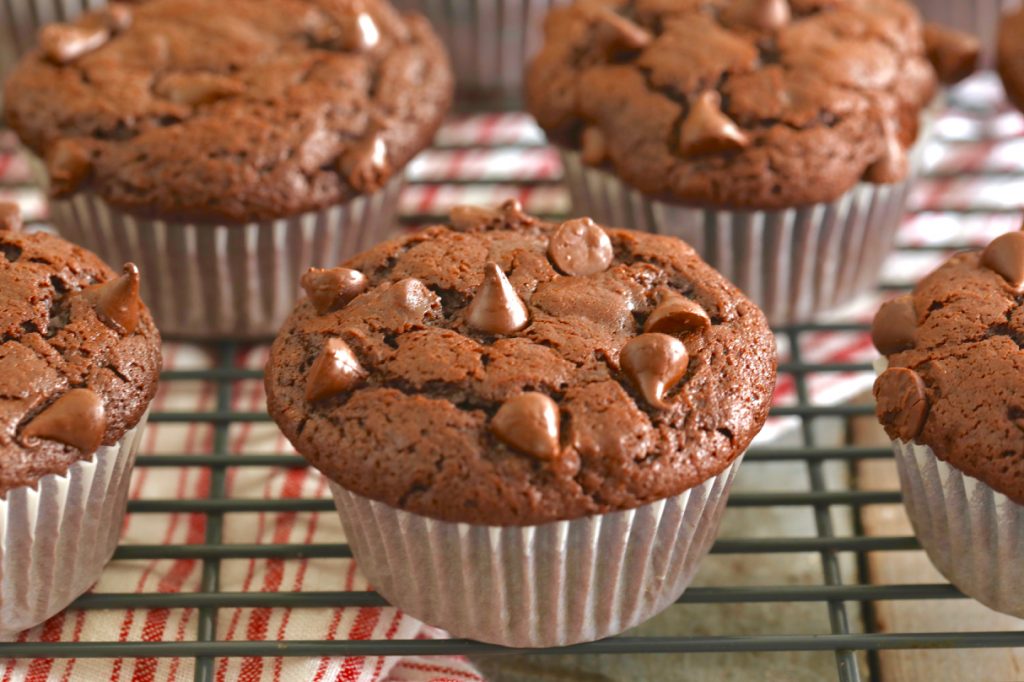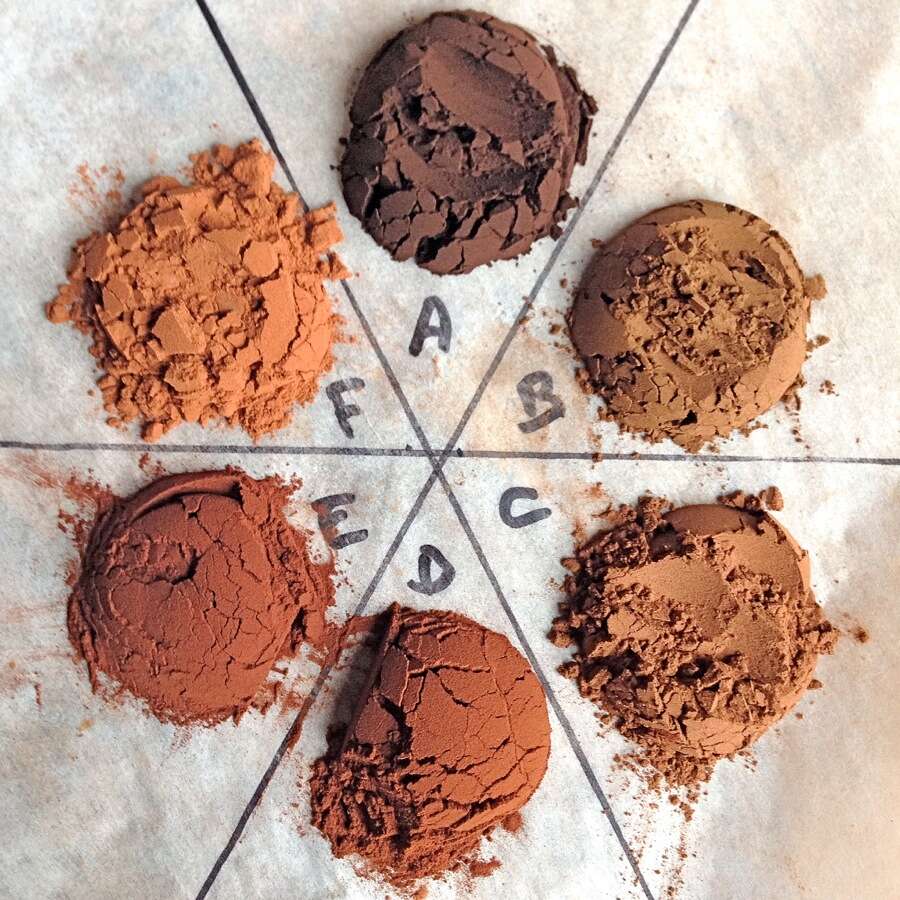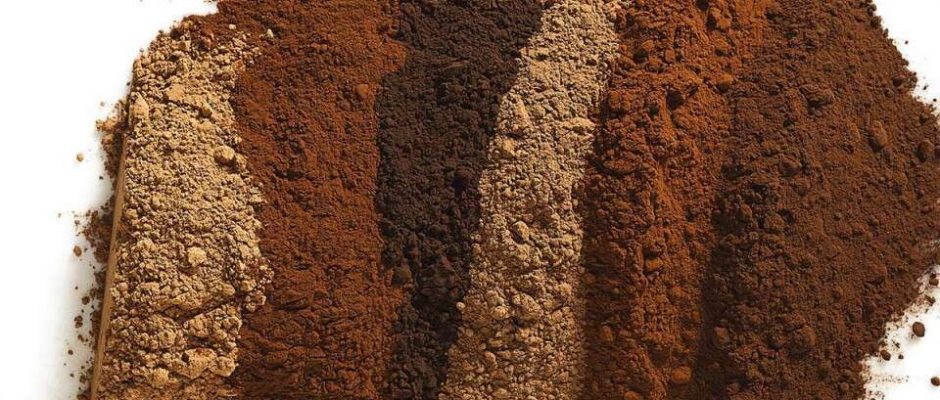Week Three of Bake for Family Fun Month
Baking traditions in our lives last a lifetime. Whether for birthdays, weekly meals or special holidays baked goods speak volumes. For our family, chocolate’s the ingredient tradition that makes any time together a celebration! Chocolate chips, cocoa, baking chocolate, chocolate frosting…all were a luxury in our home when I was a kid and they still are today.

Chef Gemma Stafford has a lovely Double Chocolate Muffin in her Kids Baking Activities that’s “just the checker” for breakfast, coffee, tea or snack time, dessert- the probability’s high there will be chocolate.
But what do you do when a recipe calls for “natural” or “baking cocoa” and you have Dutch or Dark Cocoa? Are they interchangeable? Begin solving the question with our Glossary- Cocoa. Scroll to Dutch-processed cocoa too. Here’s a short video too!
The short baking cocoa uptake is:
1: Dutch and Natural cocoas are not the same. Visually Dutch-processed will range from dark brown to red to black! Natural baking cocoa is lighter colored and in flavor.
Substitution guidelines:
3 Tablespoons (18g) Dutch processed cocoa = 3 Tablespoons (18g) natural baking cocoa plus a pinch (1/16 teaspoon) baking soda (to neutralize natural cocoa’s acidity)
2: Double check the leavening you’re using too! Baking soda and baking powder are not the same.
Baking soda reacts with acidic ingredients like natural baking cocoa. Baking powder is “double acting”- carries both acid and base- so is great with Dutch-processed cocoas.
Exception: When Dutch-processed cocoa is used in a batter or dough that contains another acid ingredient (buttermilk, fruits, vinegar, sour milk or cream for example) it may use baking soda and that’s needed to react with the acid in other acidic ingredients.

For a deeper dive, HBA member King Arthur Baking Company, P.J. Hammel provides a great tutorial, The A-B-Cs of Cocoa.




Comments are closed.